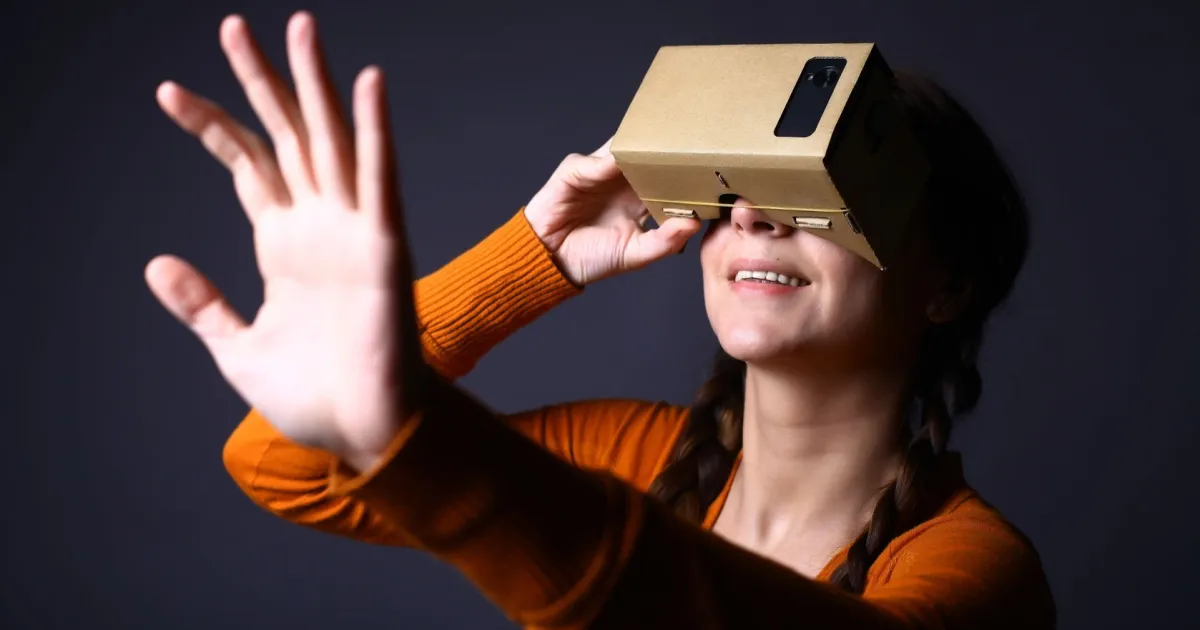Yes, Google Cardboard works with Android telephones running adaptation 4.1 or higher and most cell phones with screens somewhere in the range of 4 and 6 inches. You can really take a look at the watcher's site to check whether your telephone is viable. Google likewise offers an authority Cardboard application for Android and iOS.
What is Google Cardboard? How Does it Work?
What are the NFC chip focal points and magnets for? What heading do the focal points must be ready? What applications are accessible? What films? There are replies to these inquiries here.
You will learn everything about Google Cardboard in this Google Cardboard FAQ. Go ahead and get in touch with us assuming that you have any further inquiries. Our group will absolutely love to help you.

Initially made well known by Google and first introduced at the 2014 I/O Designer Gathering, Google Cardboard is inseparable from computer generated reality glasses utilizing a cell phone.
Cardboard guarantees union, solace and light fixing, and is currently completely viable with Google Android and Apple iOS, and is appropriate for individuals who wear eyeglasses.
You utilize your own cell phone as a presentation and sensor. You addition or drive it into the Cardboard, and it produces the augmented experience. The sensors (whirligig) all the while distinguish head developments and make an interpretation of them into the virtual world.
Assuming you look into, the picture follows vertically, and on the off chance that you focus on the left, the picture follows to one side, and so forth. This makes the deception of being in things (submersion). Google Cardboard is additionally called 360° glasses since you can turn every which way.
You essentially hold Cardboard before your eyes. The focal points carry on like an amplifying glass, amplifying the picture so practically the whole field of view (field of view) is finished up. A somewhat commonly offset picture is displayed on the presentation for the two eyes, which conveys the spatial impression (3D).

The standard is consistently something very similar, and hence numerous forms of the fundamental Google Cardboard thought have been created starting around 2014.
Be that as it may, there are enormous contrasts between the different glasses, and in many regards the overlooked details are the main problem. You can figure out what makes our POP! Cardboard so extraordinary and a portrayal of enhancements to research Cardboard V1 and V2.
To utilize Cardboard with an Android telephone, your telephone's adaptation ought to be 4.1 or higher. To see whether your telephone will work with a particular watcher, really take a look at the watcher's site.
Developing
Creating Google Cardboard Applications Requires
1: Android studio 1.0 or higher || 2: Android SDK 19 or higher
Running
Running Google Cardboard applications on actual gadgets requires
A gadget running Jellybean or higher (android 16, 4.1.x+)
A gadget with help for essentially OpenGL 2.0. Fortunately, as this diagram over at Google's engineer page expresses that 100 percent of the gadgets support no less than 2.0. || The model task at Cardboard getting everything rolling likewise requires NFC.
However I'm uncertain assuming this is expected for any Cardboard application, or only for that model. In this way, to cut to the chase, no Cardboard won't simply work with any telephone, yet since Jellybean+ is around 90% of all gadgets, you'll arrive at a decent amount.
QuickStart for Google Cardboard for Android NDK
You can utilize the Cardboard SDK to transform a cell phone into a VR stage. A cell phone can show 3D scenes with stereoscopic delivering, track and respond to head developments, and connect with applications by recognizing when the client presses the watcher button.
To begin, you'll utilize Hi Cardboard, a demo game that exhibits the center elements of the Cardboard SDK. In the game, clients check out a virtual world to find and gather objects. It tells you the best way to:

Set up your improvement climate || Download and fabricate the demo application || Output the QR code of a Cardboard watcher to save its boundaries || Track the client's head developments || Render stereoscopic pictures by setting the right view projection framework for each eye || Hi Cardboard purposes the Android NDK. Each local technique is:
Limited interestingly to a Welcome Cardboard class technique, or || Makes or erases a case of that class
Download and Construct the Demo Application
The Cardboard SDK is fabricated utilizing a pre-gathered Vulkan header document for each shader. Moves toward assemble the header documents without any preparation can be seen as here.

Run the accompanying order to clone the Cardboard SDK and the Welcome Cardboard demo application from GitHub:
Git clone https://github.com/googlevr/cardboard.git
In Android Studio, select Open a current Android Studio Task, then, at that point, select the catalog where the Cardboard SDK and the Welcome Cardboard demo application were cloned into. Your code will show up in the Undertaking window in Android Studio.
3: To gather the Cardboard SDK, double tap the collect choice inside cardboard/:sdk/Errands/assemble envelope in the Gradle tab (View > Apparatus Windows > Gradle).
4: Run the Welcome Cardboard demo application on your telephone by choosing Run > Run... furthermore, select the welcome cardboard-android target.
Configure the Device

At the point when the client taps the stuff symbol to switch Cardboard watchers, the nativeSwitchViewer technique is called. nativeSwitchViewer calls CardboardQrCode_scanQrCodeAndSaveDeviceParams, which opens the window to filter the watcher's QR code. The watcher's focal point twisting and different boundaries are refreshed once the QR code is filtered.
Lens Distortion
Each time Cardboard sweeps another QR code, the accompanying code peruses the saved boundaries and utilizations them to make the focal point mutilation object, which applies the legitimate focal point contortion to the delivered content:

